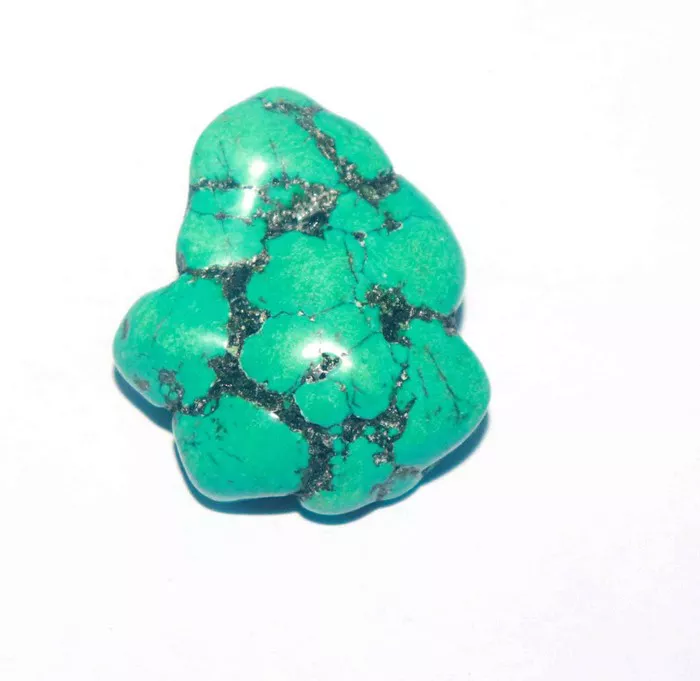Turquoise, with its captivating blue and green hues, has been cherished for centuries as a precious gemstone. However, not all turquoise is created equal in terms of value. This article aims to provide a comprehensive understanding of the factors that determine the worth of turquoise, enabling you to make informed decisions when it comes to purchasing or evaluating this exquisite gemstone.
Origin and Authenticity:
The origin of turquoise plays a significant role in determining its value. Certain locations are renowned for producing high-quality turquoise with exceptional color and character. For instance, Persian turquoise from Iran, particularly from the mines in Nishapur and Neyshabur, is considered one of the most valuable varieties due to its intense sky-blue color and minimal matrix (host rock) presence. Other notable sources include mines in the southwestern United States, such as the Sleeping Beauty mine in Arizona, known for its vibrant blue turquoise.
Furthermore, the authenticity of the turquoise is crucial in assessing its value. Synthetic or imitation turquoise, which can be created using resins or dyes, is significantly less valuable than natural turquoise. It is essential to purchase from reputable sources and seek certification from gemological laboratories to ensure the authenticity of the turquoise.
Color:
Color is perhaps the most influential factor in determining the value of turquoise. The ideal turquoise color is a vibrant blue or green-blue, often referred to as “robin’s egg blue” or “Persian blue.” Exceptional turquoise exhibits a vivid and even distribution of color without any noticeable variations or blotches. The presence of secondary colors, such as brown or gray, diminishes the value of turquoise. However, some collectors prize turquoise with unique color variations, such as spiderweb turquoise with intricate matrix patterns.
Matrix and Clarity:
The presence of matrix, or host rock, within turquoise can impact its value. Some turquoise varieties feature intricate matrix patterns that enhance the stone’s character and uniqueness. The matrix should be well-distributed, adding visual interest without overpowering the turquoise’s primary color. However, turquoise with excessive or unattractive matrix is generally less valuable.
In terms of clarity, high-quality turquoise is transparent to translucent, allowing light to pass through the gemstone. The absence of visible inclusions or fractures contributes to its value. Turquoise with a smooth, polished surface and minimal blemishes is highly desirable.
Size and Carat Weight:
As with many gemstones, larger turquoise specimens are generally more valuable than smaller ones. Larger stones allow for greater versatility in jewelry design and are often sought after by collectors and enthusiasts. However, it’s important to note that size alone does not determine value, as other factors such as color and quality play significant roles.
Carat weight is another consideration when assessing the worth of turquoise. Higher carat weights indicate larger individual stones or quantities of turquoise, which can influence the overall value.
Rarity and Demand:
The scarcity of particular turquoise varieties contributes to their value. Turquoise mines can deplete over time, making certain types of turquoise increasingly rare and sought after. For example, Sleeping Beauty turquoise, known for its intense blue color and lack of matrix, has become progressively rarer due to the closure of its mine in Arizona.
Additionally, demand from collectors, designers, and consumers influences the value of turquoise. Popular trends and market preferences can elevate the worth of specific varieties. It’s essential to stay informed about current market dynamics to gauge the potential value of different turquoise types.
Conclusion:
Determining the value of turquoise involves considering various factors, including origin, authenticity, color, matrix, clarity, size, rarity, and demand. The interplay of these elements influences the overall desirability and worth of different turquoise varieties. Whether you are a collector, jewelry enthusiast, or simply an admirer of this remarkable gemstone, understanding these factors empowers you to make informed decisions when selecting or evaluating turquoise. Remember, the value of turquoise is subjective and can vary based on individual preferences, market dynamics, and cultural significance. By exploring these aspects, you can develop a deeper appreciation for turquoise’s beauty and its intrinsic worth.


